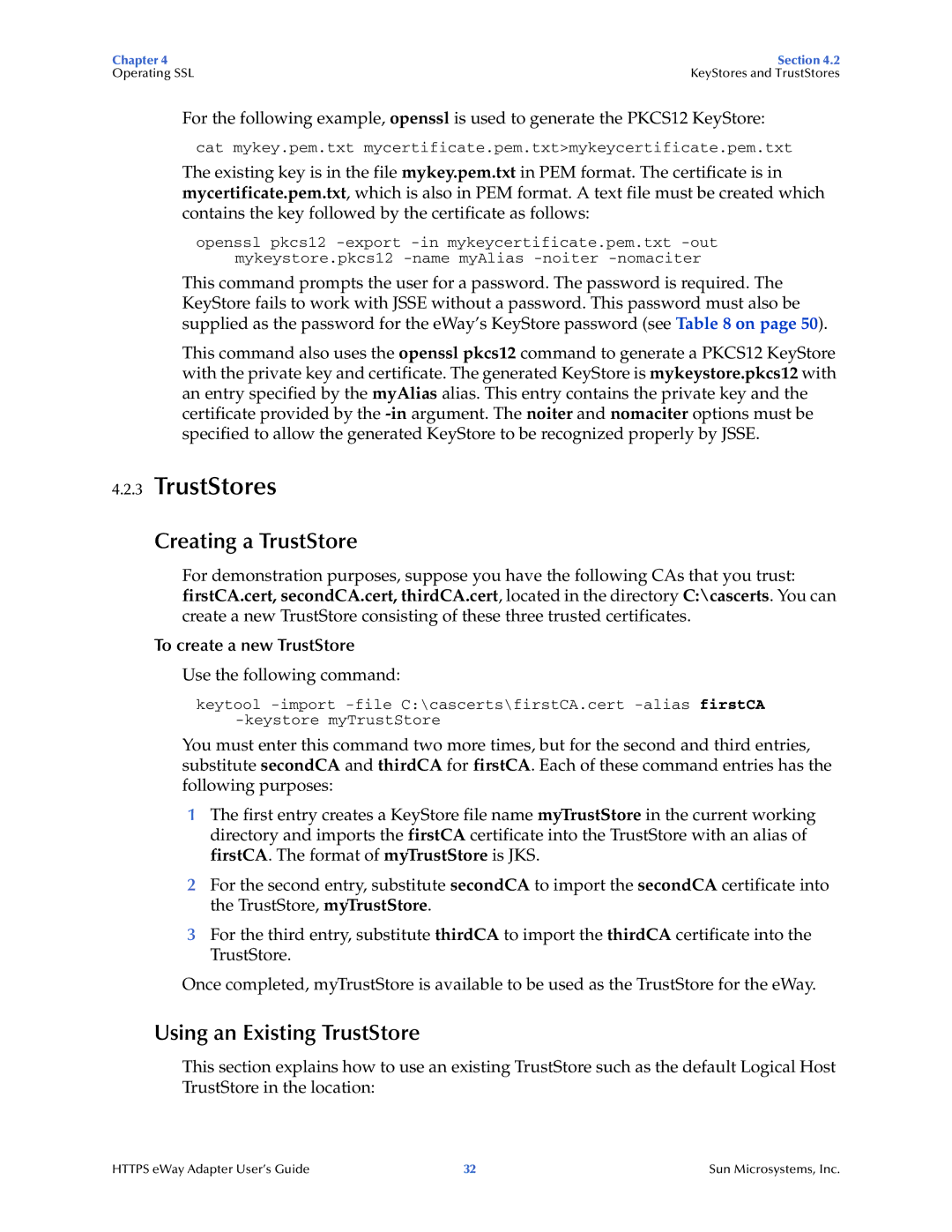Chapter 4 | Section 4.2 |
Operating SSL | KeyStores and TrustStores |
For the following example, openssl is used to generate the PKCS12 KeyStore:
cat mykey.pem.txt mycertificate.pem.txt>mykeycertificate.pem.txt
The existing key is in the file mykey.pem.txt in PEM format. The certificate is in mycertificate.pem.txt, which is also in PEM format. A text file must be created which contains the key followed by the certificate as follows:
openssl pkcs12
This command prompts the user for a password. The password is required. The KeyStore fails to work with JSSE without a password. This password must also be supplied as the password for the eWay’s KeyStore password (see Table 8 on page 50).
This command also uses the openssl pkcs12 command to generate a PKCS12 KeyStore with the private key and certificate. The generated KeyStore is mykeystore.pkcs12 with an entry specified by the myAlias alias. This entry contains the private key and the certificate provided by the
4.2.3TrustStores
Creating a TrustStore
For demonstration purposes, suppose you have the following CAs that you trust: firstCA.cert, secondCA.cert, thirdCA.cert, located in the directory C:\cascerts. You can create a new TrustStore consisting of these three trusted certificates.
To create a new TrustStore
Use the following command:
keytool
You must enter this command two more times, but for the second and third entries, substitute secondCA and thirdCA for firstCA. Each of these command entries has the following purposes:
1The first entry creates a KeyStore file name myTrustStore in the current working directory and imports the firstCA certificate into the TrustStore with an alias of firstCA. The format of myTrustStore is JKS.
2For the second entry, substitute secondCA to import the secondCA certificate into the TrustStore, myTrustStore.
3For the third entry, substitute thirdCA to import the thirdCA certificate into the TrustStore.
Once completed, myTrustStore is available to be used as the TrustStore for the eWay.
Using an Existing TrustStore
This section explains how to use an existing TrustStore such as the default Logical Host TrustStore in the location:
HTTPS eWay Adapter User’s Guide | 32 | Sun Microsystems, Inc. |
